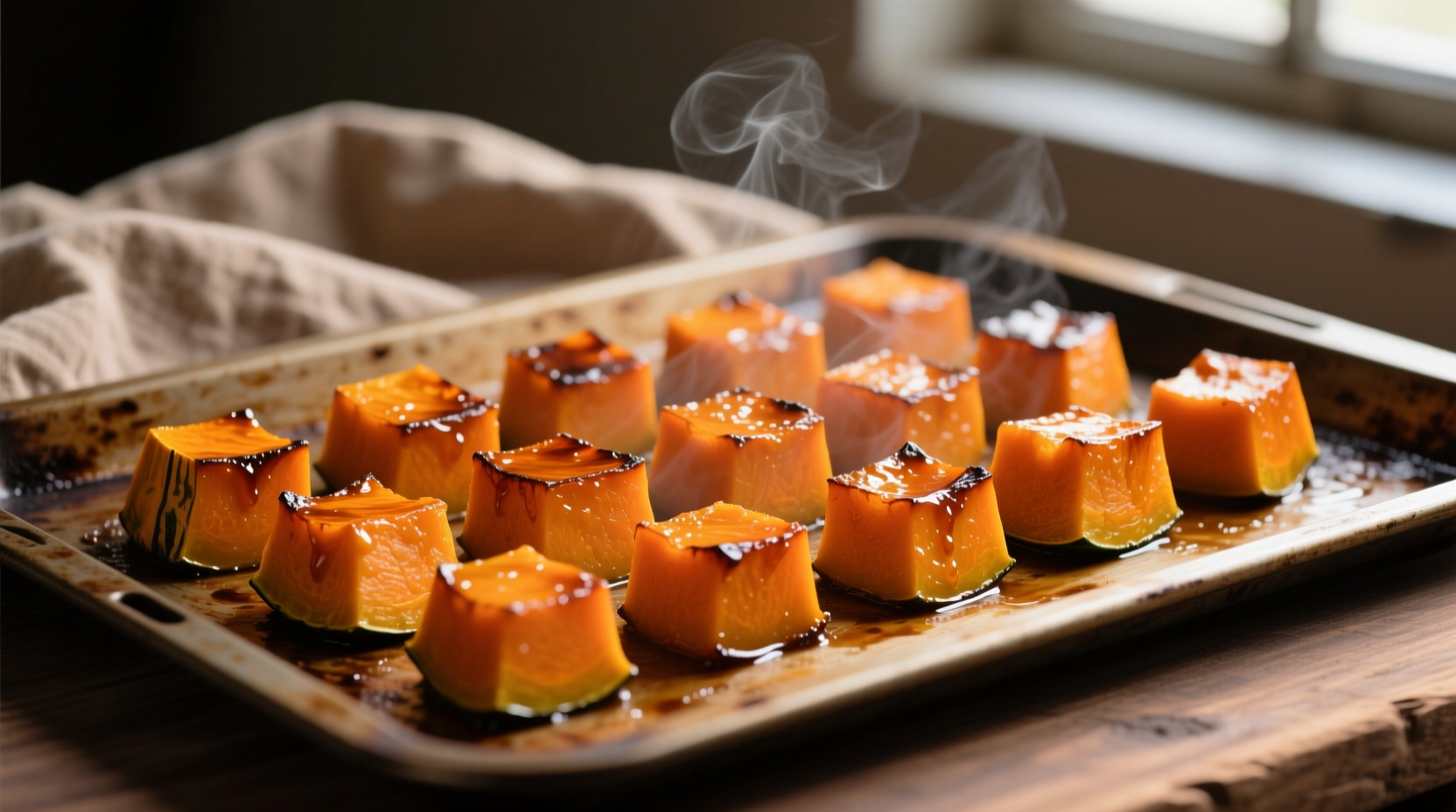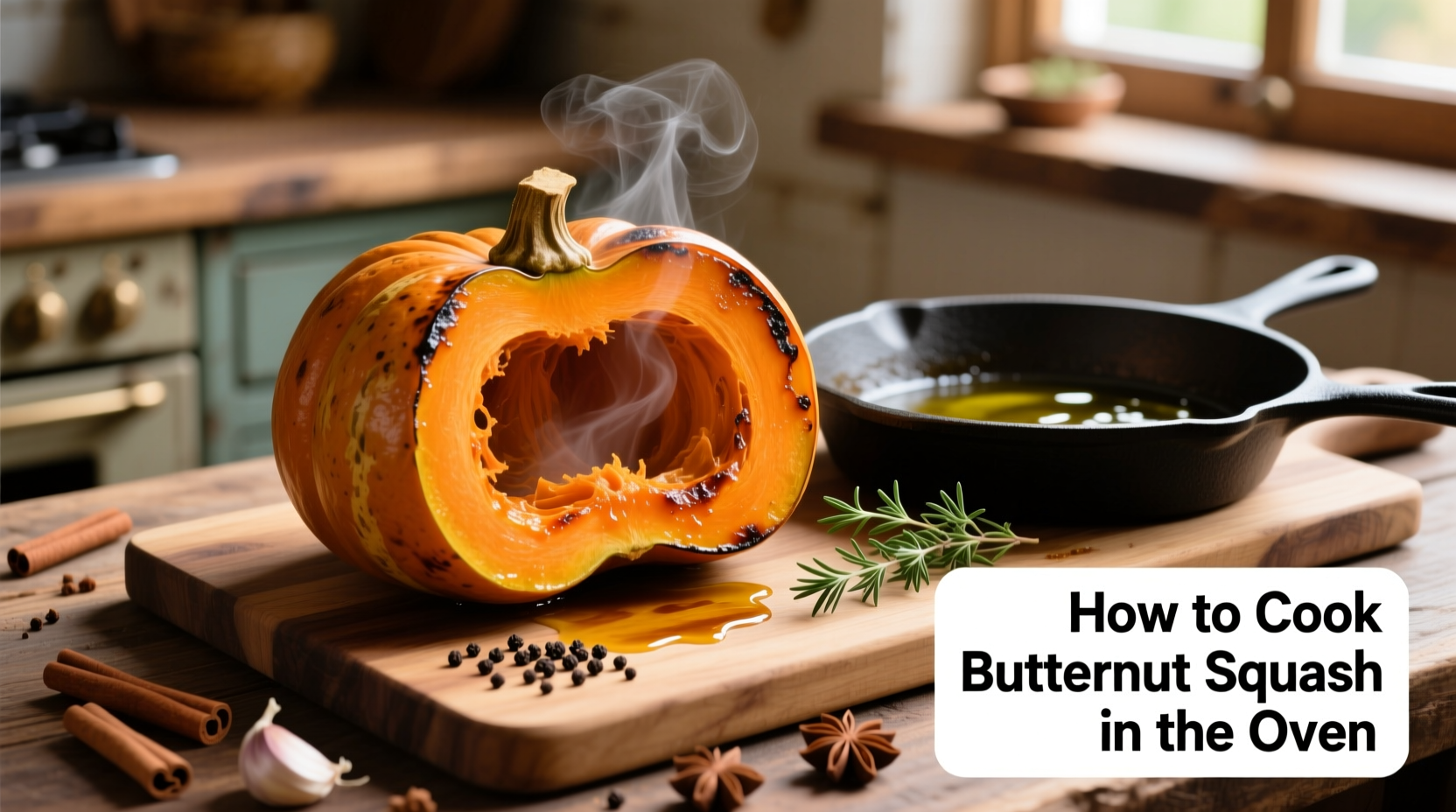Roasting butternut squash in the oven at 400°F (200°C) for 25-35 minutes produces perfectly caramelized, tender results. Start by peeling, seeding, and cutting into 1-inch cubes, then toss with olive oil, salt, and preferred seasonings before spreading evenly on a parchment-lined baking sheet.
The Ultimate Guide to Perfect Oven-Roasted Butternut Squash
Nothing beats the sweet, nutty flavor of properly roasted butternut squash. This versatile winter vegetable transforms into a caramelized, tender side dish that pairs beautifully with everything from roasted meats to grain bowls. After testing dozens of methods, we've perfected the oven technique that guarantees consistent results every time—no soggy cubes or burnt edges.
Why Oven Roasting Beats Other Cooking Methods
While butternut squash can be boiled, steamed, or microwaved, oven roasting delivers superior flavor through caramelization—the Maillard reaction that develops complex sugars at high heat. Unlike boiling which leaches nutrients into water, roasting preserves up to 30% more vitamin A according to USDA Food Safety and Inspection Service research. The dry heat also creates that coveted crispy exterior while maintaining a creamy interior texture.
| Cooking Method | Texture Result | Flavor Development | Time Required |
|---|---|---|---|
| Oven Roasting | Crispy edges, creamy center | Excellent caramelization | 25-35 minutes |
| Boiling | Uniformly soft | Muted flavor | 15-20 minutes |
| Steaming | Slightly firm | Moderate flavor | 20-25 minutes |
Essential Tools You'll Need
Before you begin, gather these kitchen essentials:
- Sharp chef's knife (8-10 inch)
- Vegetable peeler with Y-blade
- Sturdy cutting board
- Large mixing bowl
- Parchment paper or silicone baking mat
- Rimmed baking sheet (18x13 inch)
Step-by-Step Roasting Process
Preparation Phase: Safety First
Butternut squash has a tough outer skin and irregular shape that requires careful handling. Start by slicing 1/2 inch off both ends using a rocking knife motion. Stand the squash upright on a stable surface and carefully peel downward with a Y-peeler. Cut in half crosswise at the neck-body junction, then use a sturdy spoon to scrape out seeds and stringy pulp (save seeds for roasting!).

Cutting Technique for Even Cooking
Uniform 1-inch cubes ensure consistent roasting. For the neck portion, cut into 2-inch lengths, then quarter lengthwise before dicing. The bulbous bottom requires halving first, then cutting flat sides down for stable slicing. Never rush this step—uneven pieces lead to some cubes burning while others remain undercooked. Professional chefs at the Culinary Institute of America recommend this technique for optimal heat distribution.
Seasoning & Tossing: The Flavor Foundation
Place cubes in a large bowl and add:
- 1½ tablespoons extra-virgin olive oil per pound of squash
- ¾ teaspoon kosher salt
- ½ teaspoon freshly ground black pepper
- Optional: ¼ teaspoon each ground cinnamon and nutmeg
Toss gently with clean hands until evenly coated—this massage technique helps oil penetrate crevices. Avoid overcrowding; if your bowl seems too full, work in batches. This step makes the difference between bland and restaurant-quality results for how to roast butternut squash in oven properly.
The Roasting Process: Temperature Control
Preheat your oven to 400°F (200°C) with rack positioned in the center. Line a rimmed baking sheet with parchment paper (not wax paper, which can melt) and spread squash in a single layer with space between pieces. Crowding causes steaming instead of roasting—a common mistake when learning how to cook butternut squash in oven.
Roast for 25-35 minutes, flipping halfway through with a thin metal spatula. The squash is done when fork-tender with golden-brown edges. For extra caramelization, broil 1-2 minutes at the end—but watch closely to prevent burning. Internal temperature should reach 205-210°F for perfect texture.
Avoid These 3 Common Mistakes
- Skipping the flip: One-sided roasting creates uneven texture. Flip at the 15-minute mark for all-around caramelization.
- Using wet squash: Pat cubes dry with paper towels before oiling. Moisture prevents proper browning.
- Underseasoning: Butternut squash needs generous salt. Season in layers—before and after roasting.
Variations for Every Palate
Once you've mastered the basic how to cook butternut squash in oven technique, experiment with these chef-approved variations:
- Savory Herb: Add 1 tablespoon fresh rosemary and 2 minced garlic cloves before roasting
- Sweet Maple: Replace oil with 2 tablespoons pure maple syrup plus 1 tablespoon oil
- Spiced Curry: Toss with 1 teaspoon curry powder and ¼ teaspoon cayenne
When This Method Works Best (And When It Doesn't)
This roasting technique shines for side dishes and grain bowls but has limitations. It's ideal when you need 2-4 servings with deep flavor development, but not recommended when:
- You're short on time (roasting takes longer than microwaving)
- Preparing baby food (boiling yields smoother puree)
- Need perfectly uniform texture for soups (steaming prevents water absorption)
For meal prep enthusiasts, this method scales beautifully—double the batch and store extras for quick lunches all week.
Storage & Reheating Tips
Cool completely before storing in airtight containers. Properly stored roasted squash lasts:
- Refrigerator: 4-5 days
- Freezer: 10-12 months
Reheat in a 375°F oven for 10-15 minutes to restore crispness—microwaving makes it soggy. For frozen squash, roast directly from frozen adding 5-8 minutes to cooking time.
Frequently Asked Questions
Can I roast butternut squash with the skin on? While technically possible, the tough skin doesn't soften sufficiently for pleasant eating. Peeling ensures optimal texture, though you can roast halves with skin on then scoop out flesh after cooking.
Why is my roasted butternut squash watery? This usually happens when pieces are overcrowded on the pan, causing steaming instead of roasting. Use two pans if needed, and ensure pieces have space between them for proper evaporation.
What's the best way to cut butternut squash safely? Microwave whole squash for 2-3 minutes to soften skin slightly before cutting. Always cut on a stable surface with a sharp knife, and keep fingers curled away from the blade path.
Can I use frozen butternut squash for roasting? Yes, but thaw completely and pat very dry first. Expect slightly longer cooking time and less caramelization than fresh squash due to cellular breakdown during freezing.











 浙公网安备
33010002000092号
浙公网安备
33010002000092号 浙B2-20120091-4
浙B2-20120091-4